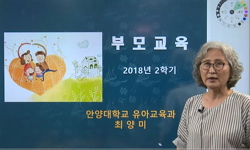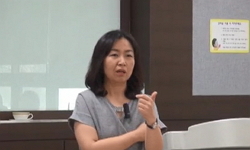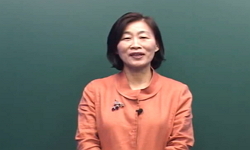Having adapted to the geographical condition and four seasons, Mongolian developed a nomadic tradition and moved following the nature’s law. Nomadism is considerably invaluable in protection of Mongolian traditional nomadic culture and lifestyle. Th...
http://chineseinput.net/에서 pinyin(병음)방식으로 중국어를 변환할 수 있습니다.
변환된 중국어를 복사하여 사용하시면 됩니다.
- 中文 을 입력하시려면 zhongwen을 입력하시고 space를누르시면됩니다.
- 北京 을 입력하시려면 beijing을 입력하시고 space를 누르시면 됩니다.

몽골인의 전통적 효경사상과 효 문화 연구 = A study on the traditional filial piety philosophy and piety cultures of Mongolian
한글로보기부가정보
다국어 초록 (Multilingual Abstract)
Having adapted to the geographical condition and four seasons, Mongolian developed a nomadic tradition and moved following the nature’s law. Nomadism is considerably invaluable in protection of Mongolian traditional nomadic culture and lifestyle. This custom is transmitted from generation to generation in home life. Therefore, this article divides traditional filial piety into three categories: Mongolian home education method, Mongolian piety and respect towards their parents, Mongolian piety and respect in wedding ceremony.
In the first part discussing Mongolian home education method, I examined how Mongolian children are brought up, and how they are educated at home. Then, I compared the present education to how classic literature and documents describe, focusing on the devotion and respect towards the parents. The essence of Mongolian education is that parents take care of their children, and the children become respectful to their parents. Taking over the tradition is even more important in that this is vital today as well.
In the second part of this research discussing Mongolian respect and devotion towards parents, I classified the subject into three parts: the history and the aspect of Mongolian traditional filial duty towards parents, and ways to encourage this traditional duty. Among many Mongolian traditions, honorific forms of speech and the following respects between family members still exist. The Mongolian government is therefore bringing the traditions up with by regulating related laws. The traditions are shown in the wedding ceremony as well.
Considering this, the third part of the study about the etiquettes of respecting parents in the wedding ceremony is classified into mutual respect between the parents and children, groom’s manner to respect his wife’s parents, and bride’s manner to respect his. I compared these etiquettes to how classic literature and documents describe as well. In Mongolia, wedding is a matter of congratulation which the new family composed by bride and groom continue to carry on the occupation and the lifestyle of their ancestors. In this joyful occasion, both families and the relatives have a quality time to harden their strong relationship by giving well-wish remarks, valuable lessons they learned, and valuable presents.
The bride and groom are imposed of the duty to respect each other’s elders and at the same time obtain right to be loved from the elders and to live following their lessons. The positive thinking that the bride and groom could have happiness, laughs and pleasure in life through this process is reflected on the tradition.
Synthetically speaking, Mongolian culture, lifestyle, and customs are derived from the nomadic life that is harmonious with nature. Especially the filial piety is based on the role-modeling and mutual respects. This tradition is still important today, and government is recently trying to raise this tradition with regulations.
Thanks to the active international cooperation between Mongolia and Korea taking place in both governmental and nongovernmental way, there are more and more people from both countries that learn the languages and cultures. Moreover, the number of international marriages between the countries increase and people from both countries are getting closer. However, there are also problems that could devaluate this positive image between the countries. In that sense this research does have significance in that it could offer proper understanding on Mongolian traditional filial piety not only to Korean, Mongolian, and the international family, but also people who learn Mongolian language and culture, and who are interested in Mongolian culture and custom.
참고문헌 (Reference)
1 Otgontsetseg,D, "한국 구비문학을 활용한 한국어교육" 2005
2 김기선, "에스키모와 인디언 문화" 민속원 2003
3 Otgontsetseg,D, "문화 대비적 관점에서 본 한국어와 몽골어의 호칭과 지칭" 2010
4 이안나, "몽골인의 생활과 풍속" 첫눈에 2005
5 Otgontsetseg,D, "몽골인 학습자를 위한 문화 교육 실러버스"
6 박환영, "몽골의 전통과 민속보기" 박이정 2008
7 이안나, "몽골의 가정예절과 전통" 민속원 2007
8 박원길, "몽골비사의 종합적 연구" 민속원 2003
9 Otgontsetseg,D, "蒙-韓 말[馬] 관련 象徵에 대한 比較硏究" 국제한국어언어문화학회 2 (2): 2005
10 Otgontsetseg,D, "蒙-韓 구비문학에서 말[馬]이 지니는 의미와 상징" 2009
1 Otgontsetseg,D, "한국 구비문학을 활용한 한국어교육" 2005
2 김기선, "에스키모와 인디언 문화" 민속원 2003
3 Otgontsetseg,D, "문화 대비적 관점에서 본 한국어와 몽골어의 호칭과 지칭" 2010
4 이안나, "몽골인의 생활과 풍속" 첫눈에 2005
5 Otgontsetseg,D, "몽골인 학습자를 위한 문화 교육 실러버스"
6 박환영, "몽골의 전통과 민속보기" 박이정 2008
7 이안나, "몽골의 가정예절과 전통" 민속원 2007
8 박원길, "몽골비사의 종합적 연구" 민속원 2003
9 Otgontsetseg,D, "蒙-韓 말[馬] 관련 象徵에 대한 比較硏究" 국제한국어언어문화학회 2 (2): 2005
10 Otgontsetseg,D, "蒙-韓 구비문학에서 말[馬]이 지니는 의미와 상징" 2009
11 "Өдрийн сонин сонины 2009 оны 2 сар № 354"
12 "Үнэн сонин. 2008 оны 2 дугаар сар №136"
13 Хүрэлбаатар Л. Энэтхэг, "төр ёсны шастир”, “хос ёсны сургаал”-ын үзэл санааны агуулга, ёс зүйн уламжлал" (10) : 2000
14 Монгол ёс заншил, "Шинжлэх ухааны академи Түүхийн хүрээлэн Угсаатны судлал, Нийгэм-соёлын антроп ологийн салбар. Монгол улсын их сурууль Нийгмийн шинжлэх ухааны сургууль Нийгэм-соёлын антропологийн тэнхим"
15 "Төмөрбаатар Ж. Соёл судлалын үндэс"
16 Дорждагва Ч, "Соёл судлалын үндэс"
17 "Монголын нууц товчоо"
18 Нямбуу Х, "Монголчуудын цээрлэх ёсны хураангуй толь"
19 "Монгол ёс заншилын их тайлбар толь"
20 "Монгол ёс заншилын дунд тайлбар толь"
21 Арьяасүрэн Ч, "Монгол ёс заншилын дунд тайлбар толь"
22 Арьяасүрэн Ч, "Монгол ёс заншилын бага тайлбар толь"
23 "Монгол улсын үндсэн хууль"
24 Өлзийхутаг Ц, "Монгол ардын зүйр цэцэн үг"
25 "Дашдоржийн Нацагдорж. Бүрэн түүвэр"
26 "Балданы Содном. Зохиол судлал"
동일학술지(권/호) 다른 논문
-
Монгол шүлгийн дунд холбоцын зарим онцлог
- 한국몽골학회
- 갈바예르
- 2011
- KCI등재
-
사회 교과서 속의 몽골 관련 서술 -중·고등학교 사회·세계사 교과서를 중심으로-
- 한국몽골학회
- 윤용혁
- 2011
- KCI등재
-
몽골의 게르(Ger)에 나타난 북방문화원형 디자인 연구
- 한국몽골학회
- 백승정
- 2011
- KCI등재
-
- 한국몽골학회
- 김기선
- 2011
- KCI등재
분석정보
인용정보 인용지수 설명보기
학술지 이력
| 연월일 | 이력구분 | 이력상세 | 등재구분 |
|---|---|---|---|
| 2026 | 평가예정 | 재인증평가 신청대상 (재인증) | |
| 2022-03-11 | 학회명변경 | 영문명 : TKAFMS -> KAMS |  |
| 2020-01-01 | 평가 | 등재학술지 유지 (재인증) |  |
| 2017-01-01 | 평가 | 등재학술지 유지 (계속평가) |  |
| 2015-02-26 | 학회명변경 | 영문명 : The Korean Association For Mongolian Studies -> TKAFMS |  |
| 2013-01-01 | 평가 | 등재 1차 FAIL (등재유지) |  |
| 2010-01-01 | 평가 | 등재학술지 유지 (등재유지) |  |
| 2008-01-01 | 평가 | 등재학술지 유지 (등재유지) |  |
| 2005-01-01 | 평가 | 등재학술지 선정 (등재후보2차) |  |
| 2004-01-01 | 평가 | 등재후보 1차 PASS (등재후보1차) |  |
| 2002-01-01 | 평가 | 등재후보학술지 선정 (신규평가) |  |
학술지 인용정보
| 기준연도 | WOS-KCI 통합IF(2년) | KCIF(2년) | KCIF(3년) |
|---|---|---|---|
| 2016 | 0.37 | 0.37 | 0.36 |
| KCIF(4년) | KCIF(5년) | 중심성지수(3년) | 즉시성지수 |
| 0.34 | 0.33 | 0.501 | 0.06 |




 KCI
KCI






